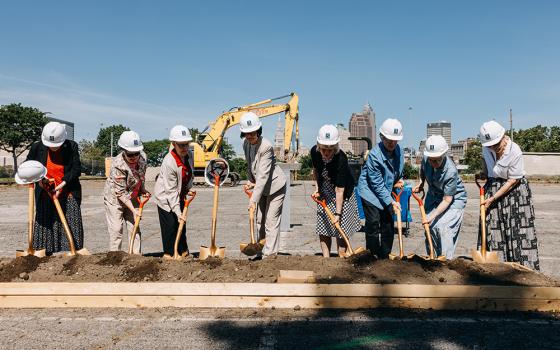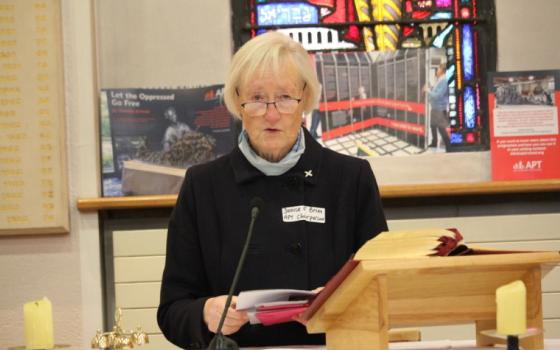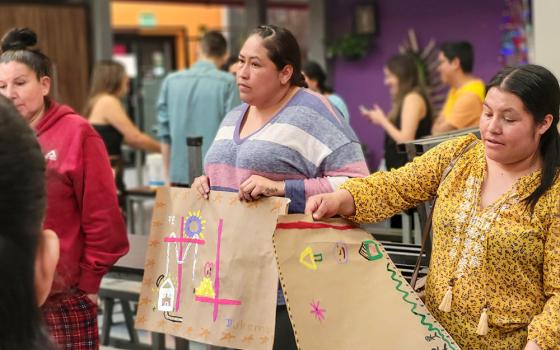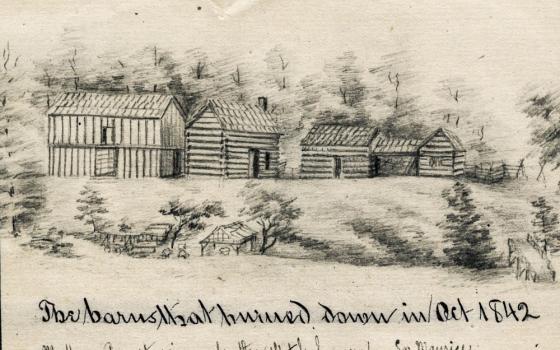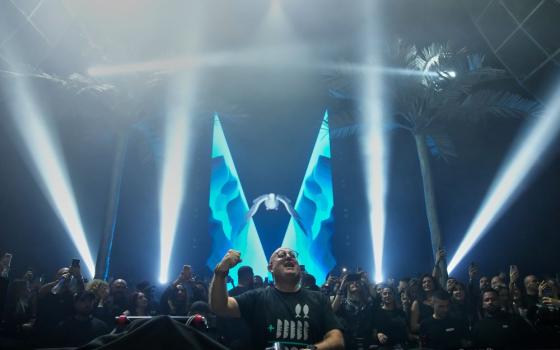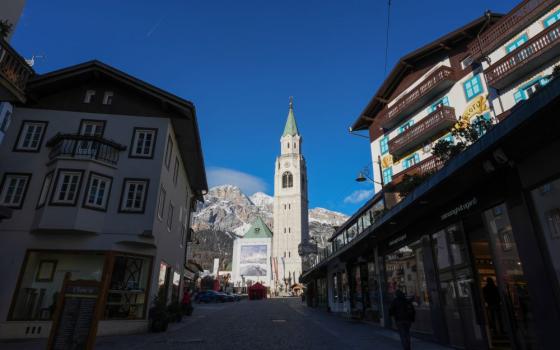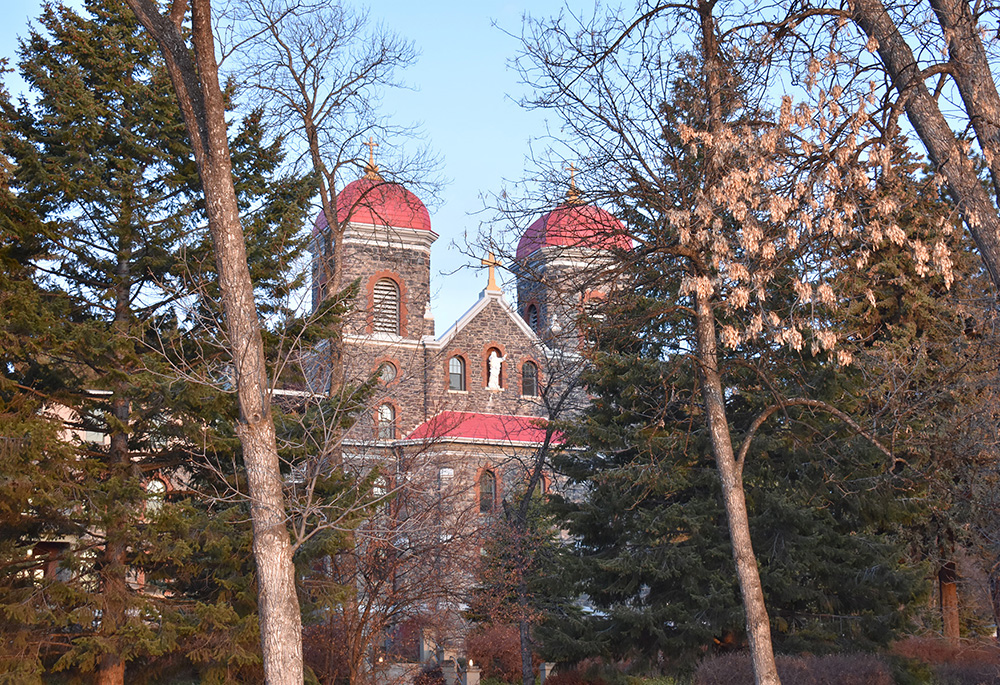
The chapel at sunrise at the Center for Benedictine Life at the Monastery of St. Gertrude, Cottonwood, Idaho (Julie A. Ferraro)
Over 50 years ago, author Rumer Godden's novel In This House of Brede was published. I've read it many times over the years.
Funny thing I discovered recently: Quite a few other people have done likewise.
This in-depth look at the journey of widowed Philippa Talbot, a businesswoman with lingering trauma, as she enters the Benedictine abbey of Brede in England and moves through the years of formation, profession and the day-to-day life within the cloister walls (not to give away the plot to those who may never have read the book) is about as honest a depiction — with fictional characters — as could have been written in the late 1960s or, perhaps, even today.
The women living inside Brede Abbey are, on the whole, very human.
Benedictines of the 21st century are, on the whole, very human.
At the Center for Benedictine Life at the Monastery of St. Gertrude in Cottonwood, Idaho — surrounded by the Camas Prairie in the northern part of the state — where I moved in April to work in communications, these very human women are mapping out a future quite singular in nature.
I wrote about part of that endeavor for Global Sisters Report in 2021: the Benedictine Cohousing Companions. There are other ways the monastic community is extending a true Benedictine welcome to all, too.
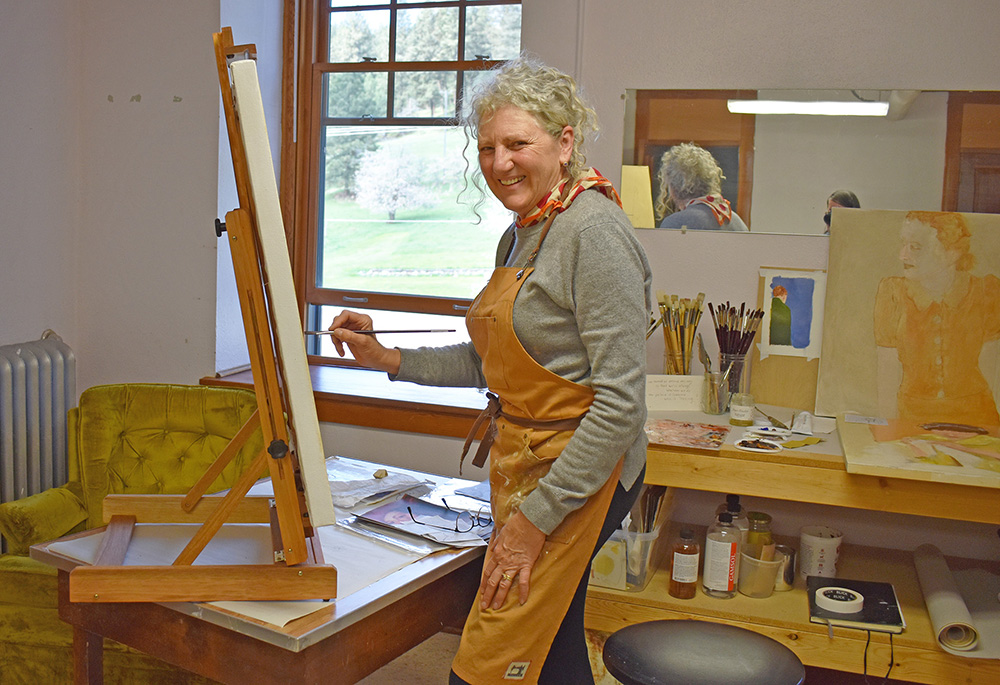
Artist-in-residence Patricia Altschul, of Sacramento, California, paints in the studio at the Center for Benedictine Life at the Monastery of St. Gertrude, during her stay throughout May. (Julie A. Ferraro)
The artist-in-residence program brings those with creative talents to the monastery for a month, offering room and board and studio space where painting, pottery or other expressions can be manifested. While snapping a few photographs in the west-lit, high-ceilinged chamber, I learned that the artist made a practice of reading In This House of Brede at least once a year.
The balance offered by the Rule of St. Benedict, enfleshed on those pages, inspired her to seek out the space where a community strives to live it to the full.
A group of students from a Catholic university in Washington state happened to be at the monastery during that same week of spring. A diverse group, they had a hands-on opportunity to learn about monastic life, including baking cakes and other treats; working in the orchard; learning about the forestry program the sisters have developed; praying the Liturgy of the Hours and attending Mass with the sisters in chapel; sharing meals; and meeting others who come to be refreshed at this well of spirituality far from the big city — or, even, a good distance from small towns.
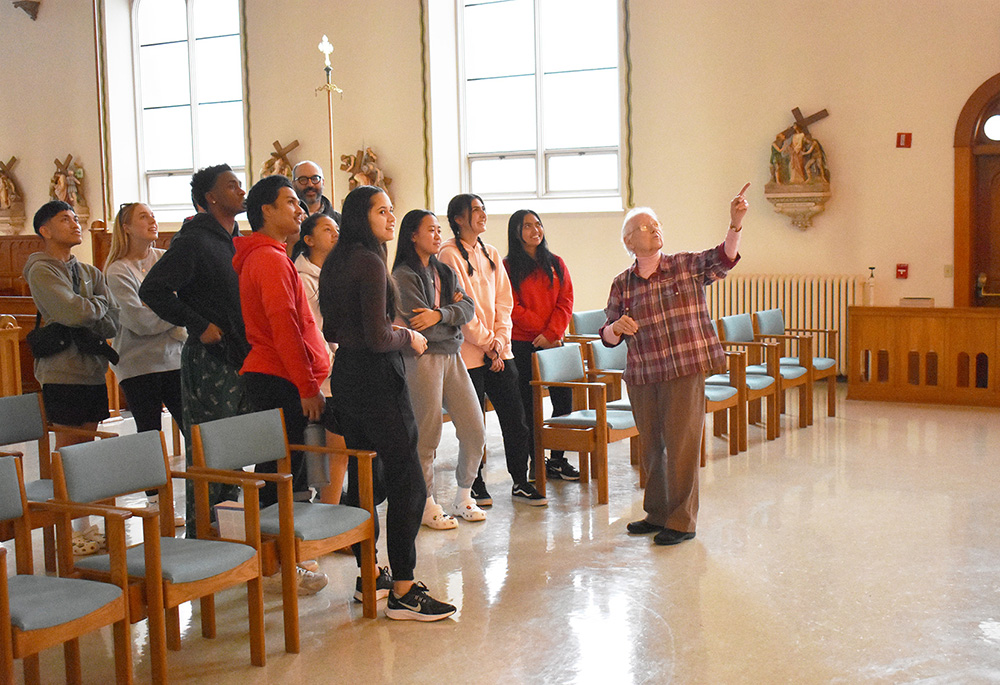
Benedictine Sr. Lillian Englert gives the Benedictine Scholars from St. Martin's University in Lacey, Washington, a tour of the chapel during their recent stay at the Center for Benedictine Life at the Monastery of St. Gertrude in Cottonwood, Idaho. (Julie A. Ferraro)
While the exploration of what the future holds for Benedictine religious life and spirituality has been ongoing for years here, a key step occurred in June 2022, when the sisters gathered together with the nearly 100 oblates, dozens of employees, volunteers and friends to discuss and affirm the transition of the Monastery of St. Gertrude to the Center for Benedictine Life at the Monastery of St. Gertrude. With the motto "All together into the future," they declared, "We are the Monastery."
The journey — the adventure — of becoming what was born at that daylong meeting is continuing, as Sr. Teresa Jackson put it, "in monastic time." That is, with discernment, consultation and prayer, the evolution into a new expression of monastic life moves forward at its own pace.
The Center for Benedictine Life is ready and willing to share the developments, especially through a six-part Zoom series that ran from April 23 to May 28. Each Sunday afternoon, approximately 70 people logged in to learn from the leadership triad of the Oblate Community of St. Gertrude — three oblates who have devoted years to the monastery — how the nine dispersed oblate communities remain connected, continue ongoing formation in the Benedictine charism and are an integral part of the monastic community.
The topic of formation itself took up one session of the series, stressing the fact that any spiritual journey — including Benedictine — is an ongoing process, not merely for those in the initial phase of the exposure to a particular spirituality. Appealing to my own credo of learning something new every day, the truth that cannot be denied is: being open to new ideas, new experiences, and new options is what has kept the Benedictine way of life vibrant through 15 centuries.
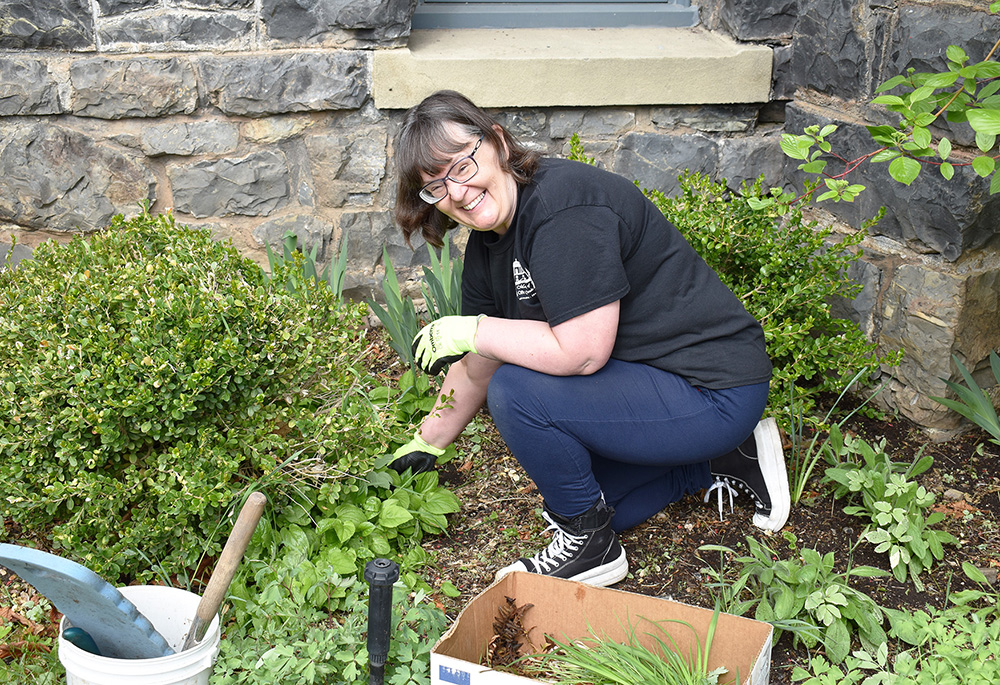
Sylvia Bognar of Alberta, Canada, works in a flower bed during a May visit to the Center for Benedictine Life at the Monastery of St. Gertrude, Cottonwood, Idaho. (Julie A. Ferraro)
Then, as Benedictine balance dictates, a look at the practical implications of these innovations took place in the fifth Zoom session.
When two of the women discerning to become part of the Benedictine Cohousing Companions spoke during one session — and when I met with others who happened to be at the monastery in person — the eagerness to create an intentional "community within a community" radiated from every face. While not vowed members, these women have plans to possibly develop an eco-spirituality program at the monastery, building on the land and resource stewardship the sisters have maintained for over a century in Cottonwood, to offer retreats, to work side-by-side in ministry with the sisters, and share their day-to-day lives.
Advertisement
All six sessions were recorded and are posted on the monastery's YouTube channel.
None of the information shared, whether via the Zoom sessions, the website, or social media, has been copyrighted or restricted from use in any way by the Center for Benedictine Life. The hope of this new form of community is that the ideas be taken and developed by others, according to their specific needs or vision, expressing the wisdom of St. Benedict to meet the challenges of this complicated, rapidly changing era.
As for me: I get to hustle around the monastery campus with my camera slung around my neck, popping into the Historical Museum with its gift shop, the Spirit Center where individuals and groups gather for retreats on a broad range of topics or concerts by local musicians, the Inn — a bed and breakfast on the grounds — the chapel, the kitchen, the steep hill (Oh, my legs!) with the grotto and mighty timber … every day its own adventure!

